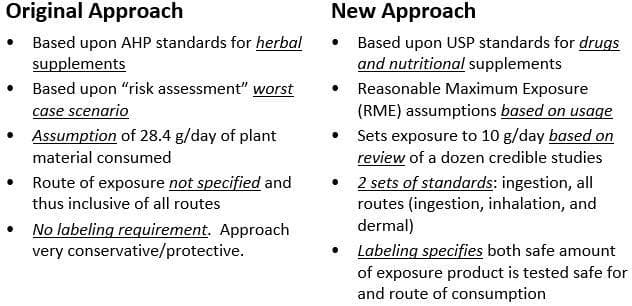Advertisement
Mass. Moves To Adjust Controversial Medical Marijuana Testing Standards
There are currently four medical marijuana dispensaries open in Massachusetts -- in Salem, Brockton, Northampton and Ayer. But patients aren't able to buy the full 10 ounces every 60 days that is allowed by state law because most of the marijuana grown by these facilities is not passing state testing standards, which dispensaries say are too strict and not realistic. Now the state is proposing a fix.
“With this new ... approach, we’re able to specify the amount of exposure and the intended use, similar to what you’d see on a bottle of Tylenol.”
Marc Nascarella, director of the environmental toxicology at DPH
Revised draft testing standards released Friday by the Department of Public Health (DPH) propose changing the amount of marijuana — and in turn possible contaminants — regulators expect heavy users to consume.
The current assumption is up to 1 ounce a day. That's a lot of marijuana — in the range of 40 joints, depending on the size. If you smoke 40 joints a day you're much more likely to inhale a dangerous amount of lead, mercury or arsenic than if you smoke 12 to 15 joints a day, which is what the state would assume (using a very rough ounce to joint translation) under the new proposed standards.
To be more precise, the state's revised standards are based on the assumption that patients would inhale or ingest 0.35 ounces a day, or 10 grams.
"The department is shifting away from a worst case risk assessment style approach and more to a pharmaceutical industry based approach," said Marc Nascarella, director of the environmental toxicology program at DPH.
The revisions include allowing generally higher amounts of arsenic, cadmium, lead and mercury, but with more specific guidelines for recommended use. More lead is allowed, for example, in marijuana products a patient eats or drinks than in pot used for smoking, vaping and creams.
New labels would have to say how much of the product is safe for daily use and in what form — by inhalation, ingestion or topical.
"With this new pharmaceutical approach, we're able to specify the amount of exposure and the intended use," Nascarella said, "similar to what you'd see on a bottle of Tylenol."
Here's a DPH summary of the proposed before and after:

Nascarella says the state is comfortable making these adjustments because it now has some information now about how much patients are consuming and in what form.
The medical marijuana industry says it is encouraged by the revisions and is pleased the Baker administration will take comments before making the changes final.
“While the new standards appear to be a step in the right direction, there is still work to be done and we look forward to engaging with DPH during this comment period and beyond to provide additional research that may help to address any remaining areas of concern," Commonwealth Dispensary Association executive director Kevin Gilnack said.
But a group that represents patients using marijuana says the revisions don't go far enough.
If allowed levels for arsenic and hydrocarbons used to extract marijuana aren't increased before these changes take effect, "marijuana flower and marijuana concentrates will no longer be accessible through dispensaries," said Nichole Snow, executive director of the Massachusetts Patient Advocacy Alliance. Snow argues that slightly higher levels of arsenic and hydrocarbons in regulated marijuana would be safer than what's sold on the street.
Snow and Gilnack plan to file comments on the state's proposed changes, which are scheduled to become final on March 31, 2016.
Dispensary owners and patients who use marijuana for medical care are anxious to resolve the question of what's safe for use and adjust testing rules. The medical marijuana industry is growing rapidly in Massachusetts. The state cleared a fourth dispensary to open in Ayer on Nov. 6. A fifth store, in Brookline, is expected to begin sales before the end of the year and there may be a sixth dispensary in January. The number of patients registering for the program and total sales are both rising rapidly.

